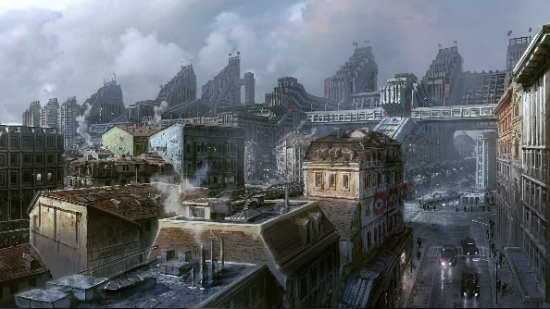Wolfenstein: The New Order is one of our most favourite games of the year. It’s a terrific shooter, and it’s got magazines full of heart to boot. But of course, the Nazi theme and splatterific violence in the game makes it a tough call when it comes to the German market, a country where not only are violent games censored, but any mention of Nazism is a ticket to a courtroom.
Trying to re-work the game for the German release was a huge exercise in guesswork, explained Jens Matthies, creative director at MachineGames. “It’s up to the developer to figure out what kind of symbolism can possibly lead to legal action.”
Talking to DeadEndThrills, Matthies gave an interesting insight into the world of German censorship and ratings boards. “Fundamentally, the problem in Germany is that videogames are not considered an artform, which of course is crazy; any German gamer will attest to that. Games are so obviously the culmination of all artforms put together. But anyway, that’s the dimension that has to do with ‘non-constitutional content’. Then there’s the USK [Unterhaltungssoftware Selbstkontrolle, a self-regulation body for games] which deals primarily with violence. That’s a rating issue,” he explained.
“But the thing is that while the USK is a pre-release thing, the constitutional symbols thing is post-release. So, essentially you can release a game that’s full of swastikas, but that’ll then result in some sort of lawsuit and trial leading to possible imprisonment. It’s up to the developer to figure out what kind of symbolism can possibly lead to legal action, and there’s no clear rulebook for this. You have to make judgement calls on everything. Is the number 88 okay if it’s on a wall somewhere? If it’s ‘door number 88’? It’s not nearly just swastikas and overt Nazi symbolism, it’s things that can be interpreted. It’s a very tricky and time-consuming process.”
In Nazi Germany, the number 88 was used as shorthand to represent the ‘Heil Hitler’ salute (H is the 8th letter of the German alphabet), and since the fall of the Third Reich its use has been outlawed. Similarly all other forms of Nazi symbolism – from the most obvious swastika to lesser known images like the Celtic Cross and the Wolfsangel – are disallowed when displayed in context with racial views. The fact that there is no official list available identifying which elements are illegal surely makes the work of developers particularly stressful.
